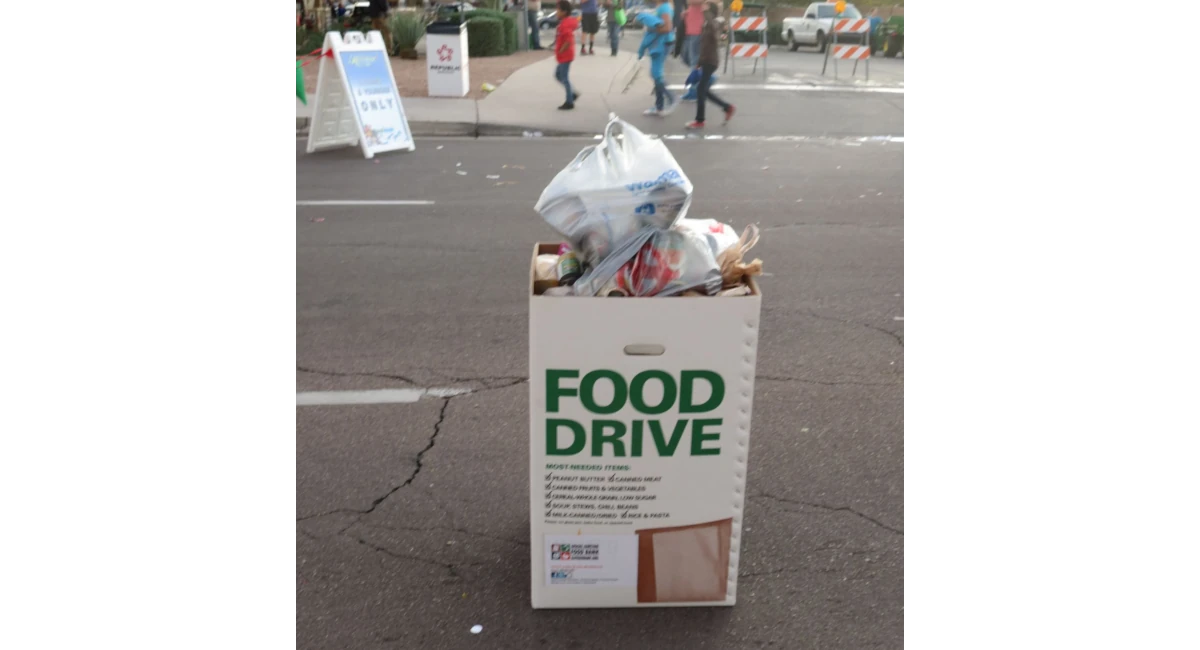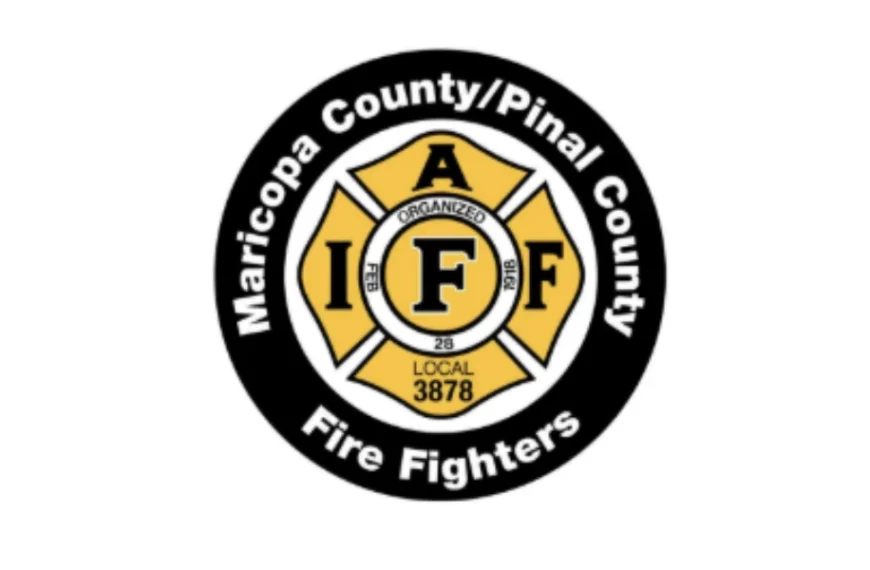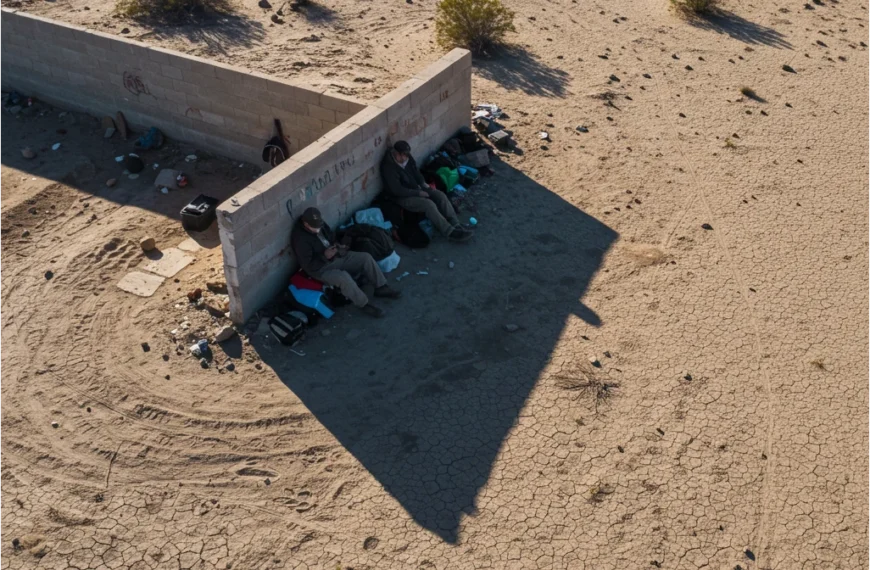The Superstition Community Food Bank has requested $75,000 in funding from the City of Apache Junction’s Health and Human Services Commission for the 2026 fiscal year, an increase from the $56,250 received for the 2024-2025 fiscal year. Executive Director Erik Arriola presented the application during a special meeting to interview applicants for Health and Human Services funding.
The meeting began with the commission acknowledging they had received correspondence from Begin Again Homes, announcing the organization was forfeiting its remaining funding for the current fiscal year and withdrawing its application for the next fiscal year.
Among the remaining four organizations seeking funding, the food bank’s request is the second highest. The Boys and Girls Club of the East Valley requested $35,000 for youth program staff, while smaller requests came from Apache Junction Community Development Corporation ($7,500 for operating expenses) and Over-Flo Missions ($4,000 for a community feast).
Programs Serving the Community
The food bank currently offers four main programs to assist residents facing food insecurity:
Emergency Food Program
The Emergency Food Program operates four days a week: Monday, Tuesday, Thursday, and Friday from 2:00 p.m. to 4:00 p.m. As Arriola explained during the meeting, “That’s just like it sounds—emergency food. Your family needs emergency food, you go to the food bank, and we give you emergency food.”
Qualified clients can visit twice a month to receive groceries including meat, bread, canned goods, non-perishable food items, and fresh fruits and vegetables. When available, they also receive milk, cheese, and eggs. This program helps those making difficult choices between paying for rent, utilities, medicine, or food.
Holiday Box Program
The Holiday Box Program provides special meal packages for Easter, 4th of July, Thanksgiving, and Christmas. Arriola highlighted the importance of this program: “The holidays are already hard if you are down and out, but they are even harder if you can’t even put the turkey on your table for Thanksgiving or the ham on your table for Christmas or Easter.”
A relatively new addition is the 4th of July box, which includes hot dogs, hot dog buns, and festive items like 2-liter bottles of root beer to help families celebrate the holiday. The food bank aims to provide 300 families with holiday boxes for each holiday.
Commodity Supplemental Food Program (CSFP)
This program targets low-income seniors aged 60 and older, providing them with nutritious USDA foods monthly. Each senior receives a box filled with high-protein, high-fiber, and nutrient-dense foods including tuna, salmon, or chicken (canned), beans, fruits, vegetables, dry milk, cereal, peanut butter, nuts, fruit juice, and occasionally fresh meat.
“When I took over the food bank three years ago, we only were able to do 70 seniors,” Arriola noted. “Since taking over, we have expanded that program to 140 seniors.” The program maintains a waiting list, which currently has over 40 seniors.
Student Backpack Food Program
Introduced last year, this program partners with the Apache Junction Unified School District (AJUSD) to provide weekend food supplies for students who might otherwise go hungry when school meals aren’t available.
“We realized with the help of the Apache Junction Unified School District that students were going over the weekend without food,” Arriola explained. “We rolled out the program at Four Peaks Elementary and then this year we rolled it out at Desert Vista Elementary, and we grew the program from 60 to 250 students that are needing these resources every weekend.”
The backpacks contain breakfast items like cereal and oatmeal, instant mac and cheese, PB&J sandwiches or supplies to make them, instant ramen or canned soups, milk (dry or boxed), fruit juice, fruits, and snacks—enough to make several healthy meals over the weekend.
Arriola detailed the contents: “There is powdered milk with water bottles so they can shake it up and make it themselves, there’s cereal so that they can have cereal each morning, there’s either a tuna fish or chicken salad lunch, there is a spaghettiio lunch, there is like a granola bar… sometimes we have fruit roll-ups that we could throw in, there is always a vegetable and a fruit in there and applesauce.”
Population Served
The Superstition Community Food Bank serves Apache Junction, Gold Canyon, Northwest Pinal County, and East Mesa. In 2024, they served a total of 44,301 individuals, with 26,331 (60%) from Apache Junction proper.
According to their application data, 31% of those served are children (0-18) and 26% are seniors (60+).
When asked about recent trends, Arriola mentioned a 500% increase in need for emergency food boxes since mid-January 2025, which he attributed to economic uncertainty. “I think it’s just uncertainty right now… all the inflation, all the non-inflation, recession is coming—there’s a lot of uncertainty,” he said.
Funding Sources and Food Supply
The Superstition Community Food Bank operates on an annual budget of $2,801,750. The requested $75,000 from Apache Junction represents approximately 2.7% of their total budget.
Arriola clarified a common misconception during the meeting: “The money that we get from our mothership—basically Feeding America, United Food Bank, all the food banks that are above us—the answer is zero. We don’t get any money from those partnerships.”
Instead, their funding comes from organizations, churches, 55+ communities, schools, and private donors. Pinal County contributed $7,000 last year. The food bank also conducts fundraisers, though Arriola noted their annual charity golf tournament has seen declining returns.
The food bank receives food through several channels:
- USDA food that passes through Feeding America and United Food Bank
- Daily “Food Rescue” program where staff collect about-to-expire items from local grocery stores
- Food drives held throughout the year
- Direct purchases using grant money
Food from the USDA comes through contractual agreements made a year in advance. Arriola mentioned contracts are secure for the next nine months, but expressed concern about potential funding changes after that period.
He highlighted that “everything that is given to us from USDA all the way down is all homegrown… all American farmers, American-produced, American-packaged.”
Food Distribution and Allocation
The food bank allocates approximately 25-30 pounds of food per person. For a family of four, this equals about 100 pounds of food per visit.
“If it is a family of six, seven, eight, nine, ten, eleven, twelve, thirteen, fourteen—the most families we’ve seen—and that is grandparents, parents, and children all living under one roof, they’re going to get about two to three grocery carts worth of food,” Arriola explained.
The food bank adjusts quantities based on family size:
- Families of 1-4 receive one commodity bag
- Families of 5-8 receive two commodity bags
- Families of 9+ receive three commodity bags
Meat portions are also scaled according to family size, with larger families receiving bigger cuts and more quantity.
Staff and Volunteers
While specific numbers weren’t provided in the meeting, the application materials describe the Superstition Community Food Bank as “driven by a small, but passionate staff, supported by an engaged, committed Board and a team of enthusiastic, energetic volunteers.”
Link2Feed Tracking System
The food bank participates in a coordinated system called Link2Feed through the Arizona Department of Economic Security. This database tracks client visits across multiple food banks.
“Every time they go to a different food pantry, a visit is logged,” Arriola explained. “When we see that they’ve been somewhere within 72 hours, we tell them you have to wait unfortunately until Thursday or Friday or Monday, just depending on when that 72 hours ends.”
This system allows clients to strategically visit different food banks throughout the month, typically with one visit to Superstition Community Food Bank in the first week, another food bank in the second week, back to Superstition in the third week, and somewhere else in the fourth week.
Supporting Seniors
The Commodity Supplemental Food Program specifically targets seniors 60 and older, providing nutritious monthly food boxes. The program maintains a strict 100% distribution rate to maximize service capacity.
“If they miss two months in a row, you get taken off the list,” Arriola explained. However, when seniors call ahead to explain they can’t make a pickup due to hospitalization or other circumstances, the food bank puts a note on their account to prevent removal from the list.
Seniors on the waiting list typically wait about four months before being added to the active list. Arriola emphasized that even while on the waiting list, seniors can still access the regular emergency food program.
For couples living in the same household, each individual can receive their own senior box, doubling the benefit per household.
The food bank contacts seniors before distribution day to remind them about pickup. When a senior can’t make it and notifies the food bank, their box goes to someone on the waiting list, helping maintain the crucial 100% distribution rate.
The Importance of 100% Distribution
Maintaining a 100% distribution rate for programs like the senior commodity boxes directly affects future allocations. Arriola explained: “When they look at it, they’re like, ‘Oh, Superstition Food Bank has been 100% for five months, let’s give them another 10 or 20 slots.'”
This strategy has allowed the food bank to double their senior program capacity from 74 to 140 slots over the past few years. Currently, Arriola mentioned more than 40 seniors on the waiting list during the meeting.
Regional Service and Non-Apache Junction Residents
About 40% of the food bank’s clientele comes from outside Apache Junction proper, primarily from Gold Canyon, Northwest Pinal County, and East Mesa.
Arriola acknowledged he currently doesn’t receive funding from these other municipalities but is working to change that. He mentioned meetings with the City of Mesa, which operates on a different grant timeline, potentially providing funding for 2026-2027. He’s also exploring options with Queen Creek, the third-largest municipality using the food bank’s services.
He noted that residents sometimes use food banks in different cities based on convenience: “There are residents that do go to food banks in Mesa or food banks in Queen Creek or pantries in those areas just because that might be where they’re working, and they may not have the time to get back to the Superstition Community Food Bank.”
Future Plans
If awarded the requested $75,000, the food bank plans to maintain current programming and expand the Student Backpack Program to two additional elementary schools: Peralta Trail Elementary (AJUSD) and Avalon Elementary School (Excalibur Schools).
“That would allow us to increase the student backpack program to those two elementary schools,” Arriola said. “It could be that there’s only 10 students at those schools, or it could be another 250 students—we don’t know, it’s a roll of the dice.” He estimated the expansion would cost approximately $20,000.
The food bank remains committed to its mission of providing food to qualified individuals and families with “kindness, respect, and dignity,” regardless of the funding decision. As Arriola concluded, “We will continue to seek funding from other grants, organizations and private donors to sustain the programs here at the Food Bank. We do not plan to stop offering our services and programming to the community if or when our agreement with the City of Apache Junction has ended.”
The Health and Human Services Commission will make its funding recommendation in the coming weeks, with final decisions expected before the start of the 2026 fiscal year.
If you would like to donate to the food bank please visit their website.








